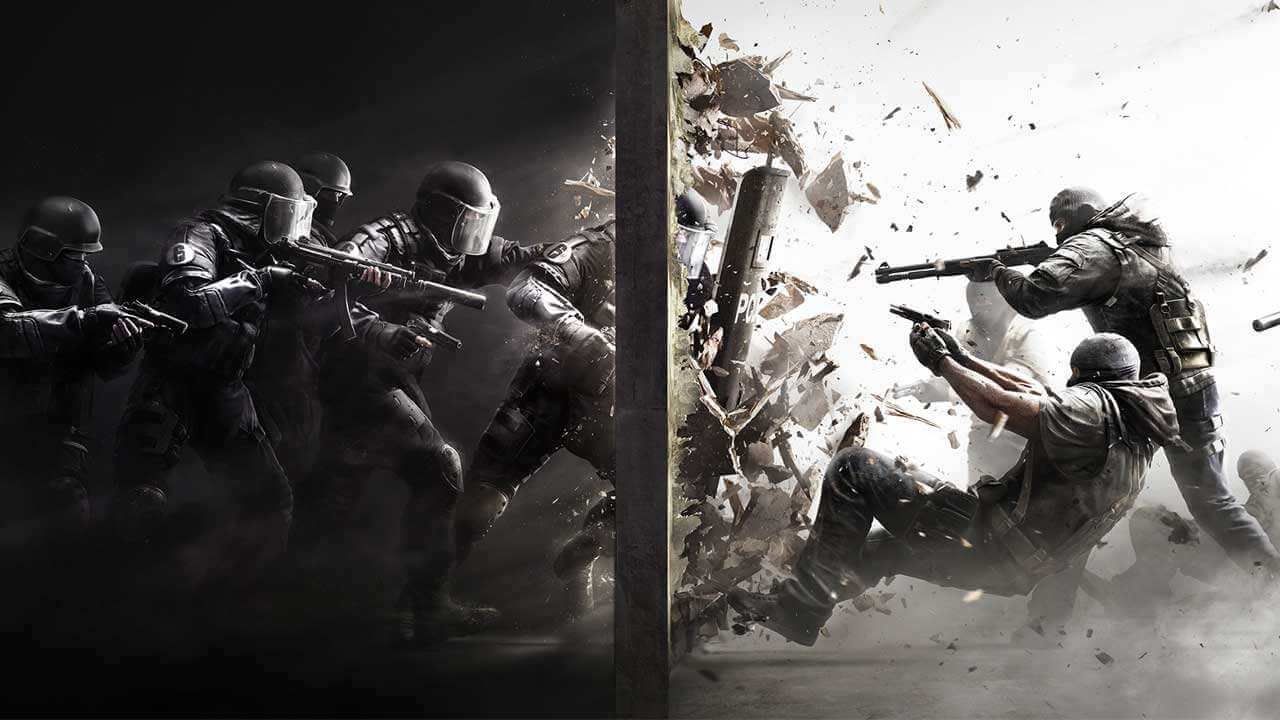It's not easy to keep major sequels a total secret these days, but it wasn't until Ubisoft's extended gameplay reveal of Tom Clancy's Rainbow Six: Siege that the world knew for sure: one of the most acclaimed tactical shooter franchises was back. The game boasted visuals that would turn even casual gamers' heads, but was far smaller and more streamlined than had been expected. Now that we've had a chance to hear from the developers and play the game for ourselves, the reason for their choices is clear - and resulted in one promising multiplayer shooter.
That point bears repeating: Rainbow Six: Siege is a multiplayer game at its core, if that weren't already clear from the announcement gameplay video. As is alluded to by the game's official artwork, and was repeated for all in a behind-closed-doors demo at E3 2014, Siege is a shooter based on the concept of 'The Wall' - the line between the defenders, and the attackers seeking to tear their way through. In this case, 'The Wall' refers to actual walls; specifically those of the game's suburban setting.
The first footage of the game in action made the premise clear: two teams of five enter the fray. One team of criminals barricades their home base, the other prepares to breach the building and escape with a hostage (after removing anyone who gets in the way). That basic structure is just about as straightforward as you can get, but seeing the game in action reveals much of the strategy and detail hidden beneath the surface.
From a first glance, it's easy to assume that with such a minimalist premise Siege is something of a throwback to a time when mouse precision and teamwork were the only things that mattered in online multiplayer. Those skills will still be needed to succeed, but players have plenty more tricks in their bag to begin with. It is this first stage of the battle that can make or break a round or match, where those seeking to infiltrate the home must 'Observe and Plan' and those defending it begin to 'Barricade and Trap.'
For the players who have occupied the home with the Hostage in tow, that means reinforcing walls, barricading windows, deploying barricades, and reshaping the home to give them an edge. For the police looking to rescue the Hostage, that means deploying drones of their own to see their opponents' handiwork, and plan how best to put their unique classes (equipped with varied weapons, gadgets, and items) to work.
Both sides face high stakes from the start, as the Hostage's position within the house (put to a vote) can make or break a round. On the other side, the police may discover where the Hostage is kept via their drone cameras, but knowing your enemy's plan doesn't make it any easier to foil.
It's clear how key a role multiplayer and team cooperation will play in success on either side, but destruction is apparently just as important to the team at Ubisoft Montreal, claiming it to be "the center of the experience." The released footage showed how breach charges and bullets will turn parts of the house into splinters and dust, but there is more depth than even that level of destruction implies.
In our demo, the developers put their time with the game to good use, with the Hostage-takers destroying entire walls of the house prior to the fight beginning, in an effort to supply themselves with better sightlines (take out the wall between bathroom and kitchen, and add a line of fire the other team may not expect). Technically, this stage of the match is just preparation for the actual gunfight; but stand outside a home and hear the explosions and gunfire of your enemies preparing their fort for an onslaught, and we doubt any player can feel truly confident.
Once both sides have finished shoring up their defenses (barricading as many windows as they wish, but fortifying only two walls per round), the 'Action Phase' begins. From that point on, the multiplayer shooter roots of the series shine, reminding any who may have thought they were playing some variant of Horde Mode that bullets do serious damage, and every downed teammate means longer odds of victory.
The gameplay itself is what any shooter enthusiast would expect: a variety of weapon types, and the most success coming from the alliance between a ranged shooter and a shielded point man. That doesn't mean a well-placed Breach Charge can't be triggered at the right moment as well, and even tossing explosive charges as a last ditch attempt for a kill is a legitimate strategy.
As is the case with most class-based, squad-oriented multiplayer shooters, exactly how satisfying or challenging the experience will be depends on the players. Learn to communicate as a team, and Ubisoft has managed to deliver the thrill of cooperative and competitive shooting, without all the bells and whistles that can cloud the air.
Exactly how big, how varied, or how lengthy the developer intends Rainbow Six: Siege to be is still unclear. But from what they have shown at E3 2014, Ubisoft Montreal made an admirable call in shifting direction on the game from a story-based epic to something just as satisfying - and far, far more addictive.
_____________________________________________________________
_____________________________________________________________
Rainbow Six Siege will release in 2015 for the PC, PS4, Xbox One.
Follow Andrew on Twitter @andrew_dyce.


